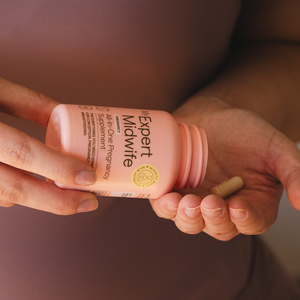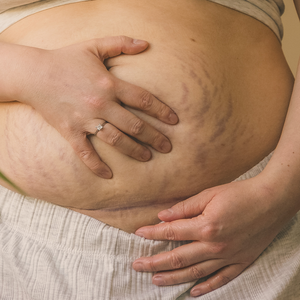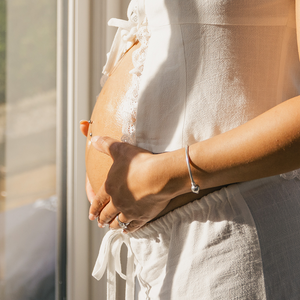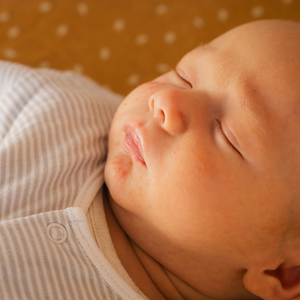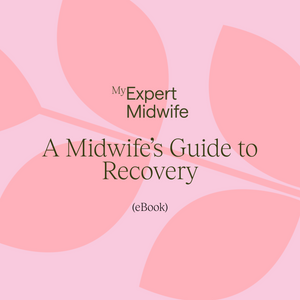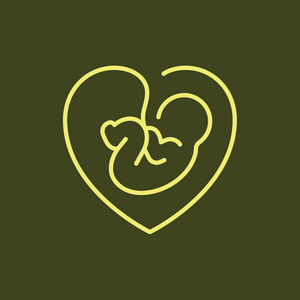Having a tear or an episiotomy (a cut) during childbirth can be quite an overwhelming thought for women. Fortunately, there are preparations you can make during your pregnancy that could help reduce the likelihood and severity of trauma from giving birth. Your recovery postnatally can also be made as comfortable as possible by taking certain measures.
What is the perineum?
The perineum is the area of skin and muscle between your vagina and anus (back passage). This stretches when you give birth and is where most tears occur.
Preparation before the birth of your baby
- Research indicates that perineal massage from 35 weeks in pregnancy can help reduce the likelihood of you needing an episiotomy.
- Pelvic floor exercises can help to strengthen your muscles- ask your midwife for information about how to do these.
- Application of warm compresses - evidence from research shows that warming up the perineum during labour/birth dilates the blood vessels and hydrates the skin, making the perineum is less likely to tear.
- You may want to avoid coached pushing during your birth and look at hypnobirthing and ways of breathing baby down during the birth to help the area stretch more slowly and easily.
Types of tears
During your birth you might sustain a tear which may or may not need stitches. There are 4 different types of perineal tear:
1st degree tear- this usually just involves the skin and often doesn’t need stitches
2nd degree tear- this is slightly deeper and involves some layers of the muscles around the perineum
3rd and 4th degree tears- these are more extensive and involve the tear extending into your back passage. These types of tears are repaired by a doctor, in the operating theatre, with a spinal anaesthetic (a one-off injection into your back) for effective pain relief. Referral to a specialist physiotherapy to promote optimal healing afterwards is common.
What is an episiotomy?
An episiotomy is a cut made to your perineum by your midwife or a doctor, with your consent, after local anaesthetic has been used to numb the area. The purpose of performing an episiotomy is to widen the vaginal opening and enable your baby to be born more quickly. This may be required if your baby is showing signs of distress and needing to be born or to enable an assisted birth with forceps or a ventouse (where not performing an episiotomy may result in a more extensive tear).
Other types of tears or trauma
Some women may sustain other damage to their vulva, in addition to or instead of a perineal tear.
Labial tears are tears to your labia minora, the fleshy folds of the vulva that extend from your clitoris and surround the opening of your vagina.
Urethral tears are uncommon and involve tearing around your urethra (the opening from which urine comes out). If you sustain a urethral tear, it is likely that you will need a catheter (a soft tube that is inserted into the urethra to keep your bladder empty) to keep you comfortable.
Grazes to your vulva, vagina and/or perineum are quite common. These will not require stitches, as only the skin is damaged, but can feel quite ‘stingy’ for the first few days.
Stitches - if required, your midwife or a doctor will be able to do the stitches for you after the placenta has been delivered. These are usually done in the birth room under local anaesthetic, unless you have sustained a 3rd or 4th degree tear, when you will need repair in theatre. All stitches done in the UK, currently, are with dissolvable threads, which begin to dissolve after about 2 weeks and disappear and your wound heals.
Looking after your tear or episiotomy after the birth of your baby
You can help your optimal recovery by:
- Keeping the area as clean as possible by showering/bathing regularly and changing your maternity pads at least 2-3 hourly.
- Using an icepack wrapped in a clean muslin or cloth. This can be gently pressed on to the area that is uncomfortable.
- Applying soothing, natural products to help your perineum feel more comfortable
- Taking regular pain relief for the first few days and as required afterwards. Paracetamol and/or ibuprofen are often recommended by midwives and doctors.
- Doing your pelvic floor exercises as soon as you feel able to. Start gently and build up the intensity gradually. This will help to strengthen your muscles and help with bladder control.
- Resting as much as possible, which will aide your healing process. Try to sit or lie in positions that feel most comfortable for you. You may need to change these regularly.
- Drinking plenty of water/fluids and eating a diet high in soluble fibre and vitamins (fruit and vegetable smoothies are excellent for this). This will aid the healing process and make bowel movements easier to pass.
- If you have any concerns (e.g. an abnormal discharge, change in odour, increased pain or feeling unwell), contact your midwife or doctor for a check-up and advice.
Summary
The thought of tearing or having an episiotomy in childbirth can be worrying. Yet, there are measures you can take to help reduce the chances of this happening. If you sustain a tear or an episiotomy, knowing how to look after your body will help your healing and recovery process.
